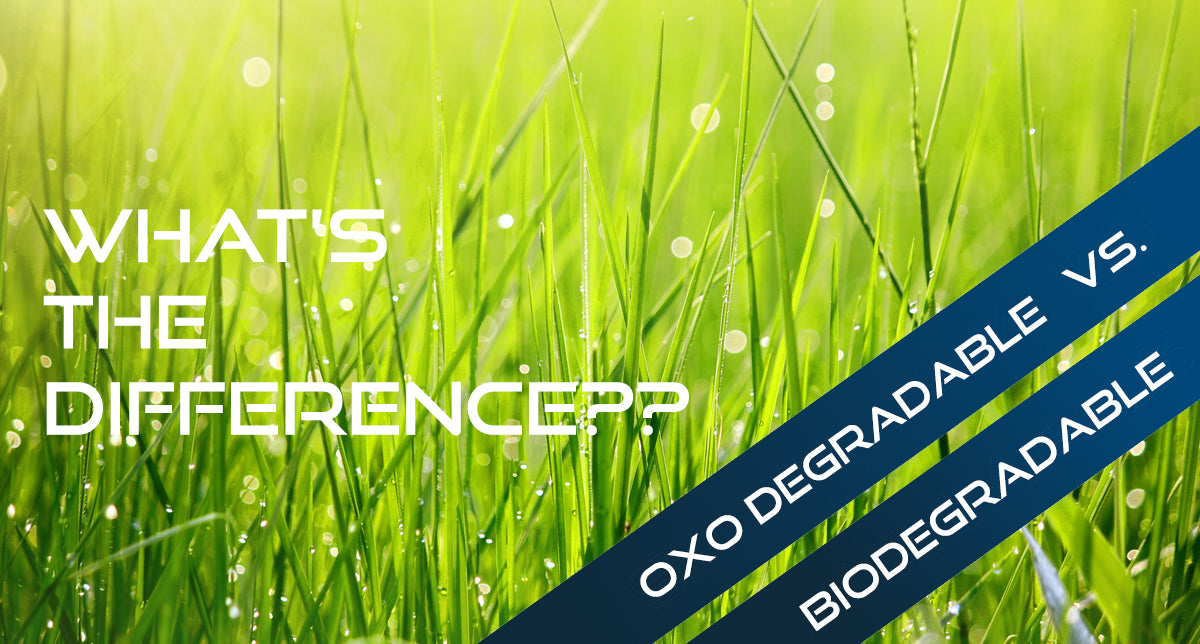Consumer demand for sustainable solutions are growing. Manufacturing of bioplastics (and products made from bioplastics) are expected to grow by as much as 20% in 2022. As consumers gradually switch their preference to more environmentally friendly products, consumers must also grow their understanding of bioplastics and their effects on the environment.
There are 3 common terms that businesses use to promote their sustainable products - Biodegradability, compostability and oxo-degradability. Although these three terms are sometimes accidentally or deliberately used interchangeably, they are not synonymous. When consumers are confused over these, especially when it comes to the disposal of products made with these materials, the consequences can be dire. Responsible companies should market their products accurately and honestly, and consumers need to understand these terms in order to make educated buying decisions and properly dispose of these materials at the end of their use.
Biodegradable vs. Oxo-degradable plastics
Most consumers who are not familiar with plastics might be confused between these two types of plastics. Of late, we are seeing an increase in oxo-degradable products marketed as environmentally friendly when it actually is not so 'friendly' to the environment.

Oxo-degradable plastics are a conventional plastic mixed with an additive in order to imitate biodegradation. When exposed to landfill conditions, oxo-degradable plastics break down into smaller and smaller pieces (called micro plastics) but don't break down at the molecular or polymer level like biodegradable plastics. The resulting micro plastics are just tiny shards of normal plastics that will take centuries to degrade.
It is encouraging to see that more and more countries and businesses around the world are starting to ban oxo-degradable from being sold or used. However, more awareness is still needed to ensure that consumers are not confusing oxo-degradable plastics as environmentally friendly plastics.

Biodegradable plastics are a conventional plastic mixed with an additive that allows microbes to consume the plastic both on the surface and the interior of the plastic. The additive used by Seals HQ in our biodegradable products are designed to allow microbes to consume the C-C bonds within the plastic structures at macromolecular levels which results in the consumption of the bonds. The process converts our biodegradable products into CH4 (methane gas), CO2 (carbon dioxide) and H2O (water). There is no harmful residue left behind after the biodegradation process! Now that's what we call environmentally friendly.
Seals HQ Biodegradable Tamper Evident Security Solutions
Seals HQ is at the forefront of researching and offering biodegradable tamper evident security solutions to our customers. We have successfully introduced biodegradable security seals and biodegradable security bags, and very soon we will be launching our biodegradable security tapes and labels!
Biodegradability does not affect the physical properties of our products so you can be assured that the security seal or security bag that you are using will still perform as designed. Shelf life is also preserved so don't worry - you won't see security seals or bags disintegrating before your eyes!
Click on the links below and you will be directed to our biodegradable tamper evident security product pages on our website:
Biodegradable Security Seals - CLICK HERE
Biodegradable Security Bags - CLICK HERE
Alternatively, please send an email to sales@sealshq.com.au or call +61 1300 920 778 (local charges may apply if calling from outside of Australia).




